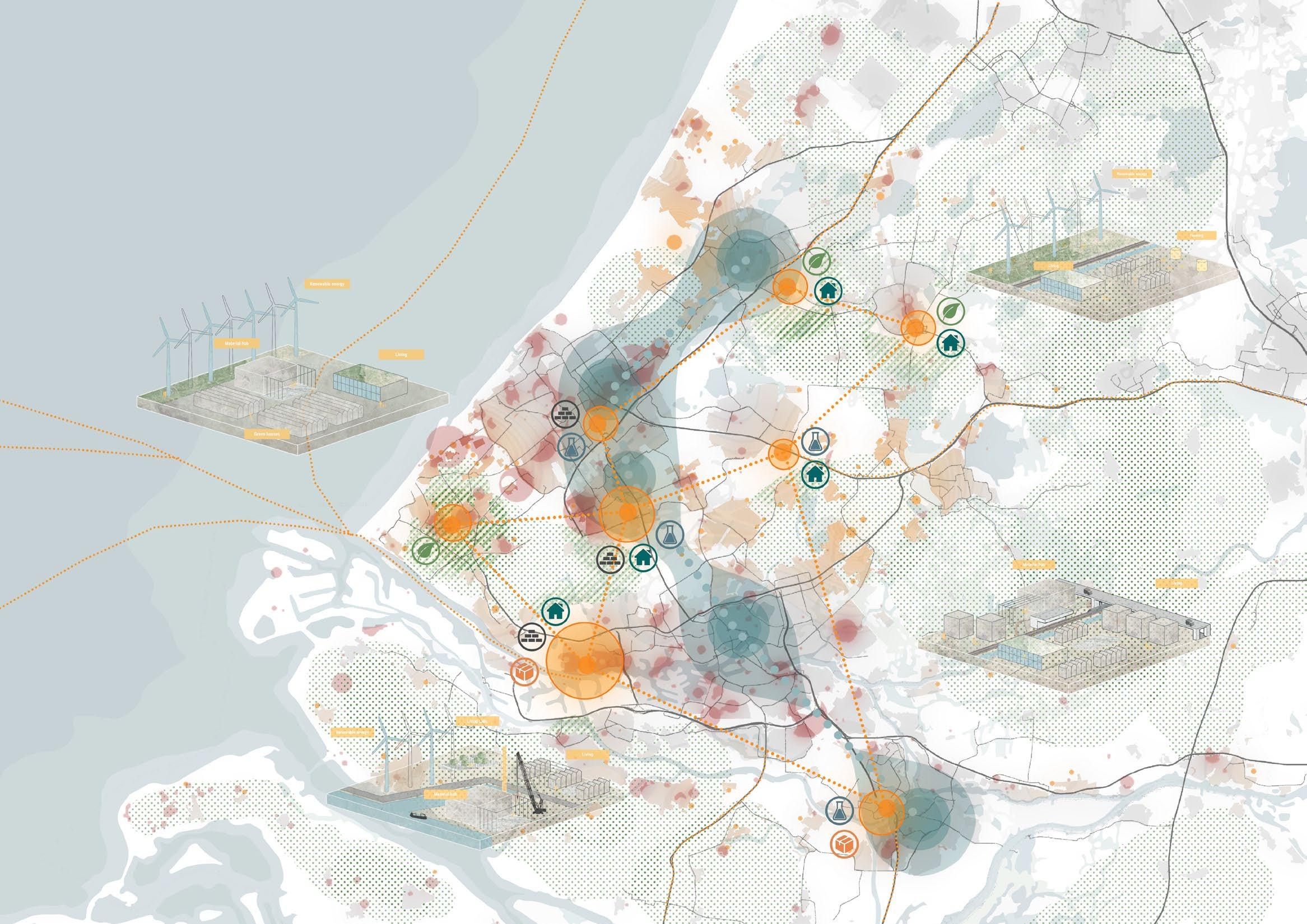CONCEPTUAL FRAMEWORK
TRANSITIONAL LANDSCAPES In the course of our research, we found that studies have shown high and diverse demands on land in South Holland. The agricultural sector still remains the main land user in South Holland, occupying over half of the province’s surface area as of 2015 (Clo.nl,2012). Built-up areas along with housing infrastructure take up only about 20 percent of the overall land. These urban areas, especially in Randstad, are very dense due to the prevailing spatial planning policies of the Netherlands (Ministry of Housing and Physical Planning 1966) which we will depict in detail in the next section. “Land is considered a finite source” which can’t be extended beyond a limit (Amenta & van Timmeren, 2018; European Commission, 2020). The criticality of land depends on the limit to which it can be exploited before it stops acting as an important resource (Kasperson et al., 1995: 25). To use the land to its full potential and bring it under the umbrella of circularity, it needs to be treated as a renewable resource (Marin, 2018).
As discussed in the previous chapters, the project’s goal is to shape the transition from a linear to circular economy in the construction and demolition sector. It also addresses the demands on urban cores and the plethora of landscapes that need to be regenerated. In this chapter the conceptual foundation of this transition is explained. The foundation is mainly based on the following theories. Transitional landscapes, New developmental models, Knowledge distribution, Re-envisioning construction practices. 10
The landscapes of South Holland share an inherent relationship with human activities (Pols et al., 2005). The dutch landscapes are treated as cultural landscapes and the land is given the utmost importance historically in dutch context (PBL, 2019). Land reclamation, urbanisation and industrialisation have been major contributors to the identity of the South Holland landscapes today. These landscapes have in turn influenced the resilience of the social groups and communities dependent on them (W.Adger, 2000). Today’s linear economy witnesses major transitions of land from extraction, reclamation, conversion, development, contamination (especially in the case of industrial activity), usage and finally abandonment. The resultant landscapes
take the longest to heal after undergoing these developments. Ergo, these wastescapes left behind by diverse human interventions are unusable and need to be regulated for efficient revival and reuse. Wastescapes are wasted landscapes or unused land parcels which are usually a result of human activity, industrial activity or spatial development strategies. The industrialisation of older city areas and the rapid urbanisation of newer city areas could be identified as two primary processes for the formation of dross scapes ( Berger, 2006). Brownfields are the results of the process of industrial change, especially in Urban areas (Grimski, & Ferber, 2001). Research suggests that there are over 93800 hectares of industrial lands and Brownfields across the Netherlands. In this new transitioning economy that iaccounts for 30% of areas that are obsolete and eligible for redevelopment. This is more than 30,000 ha of industrial land alone which is wasted as of now (PBL, 2019). These industrial areas are well-connected and in the vicinity of city centres because logistics and accessibility were the main focuses for their initial establishment. These factors give them a competitive edge over greenfield development. Waste scapes provide opportunities for sustainable urban and territorial regeneration. It includes a regenerative system which provides continuous replacement through its functional processes of energy and materials used in its operations (Van Timmeren, 2006). Revitalising wastescapes is a complex discipline and it requires diverse fields of focus making it multidisciplinary. It brings together different concepts related to economy, quality of life, health, accessibility, resources, landscape, environment and infrastructure (Van Timmeren, 2019). Since this is inherently a complex process, it is not just achieved by a single party but requires a collaborative






